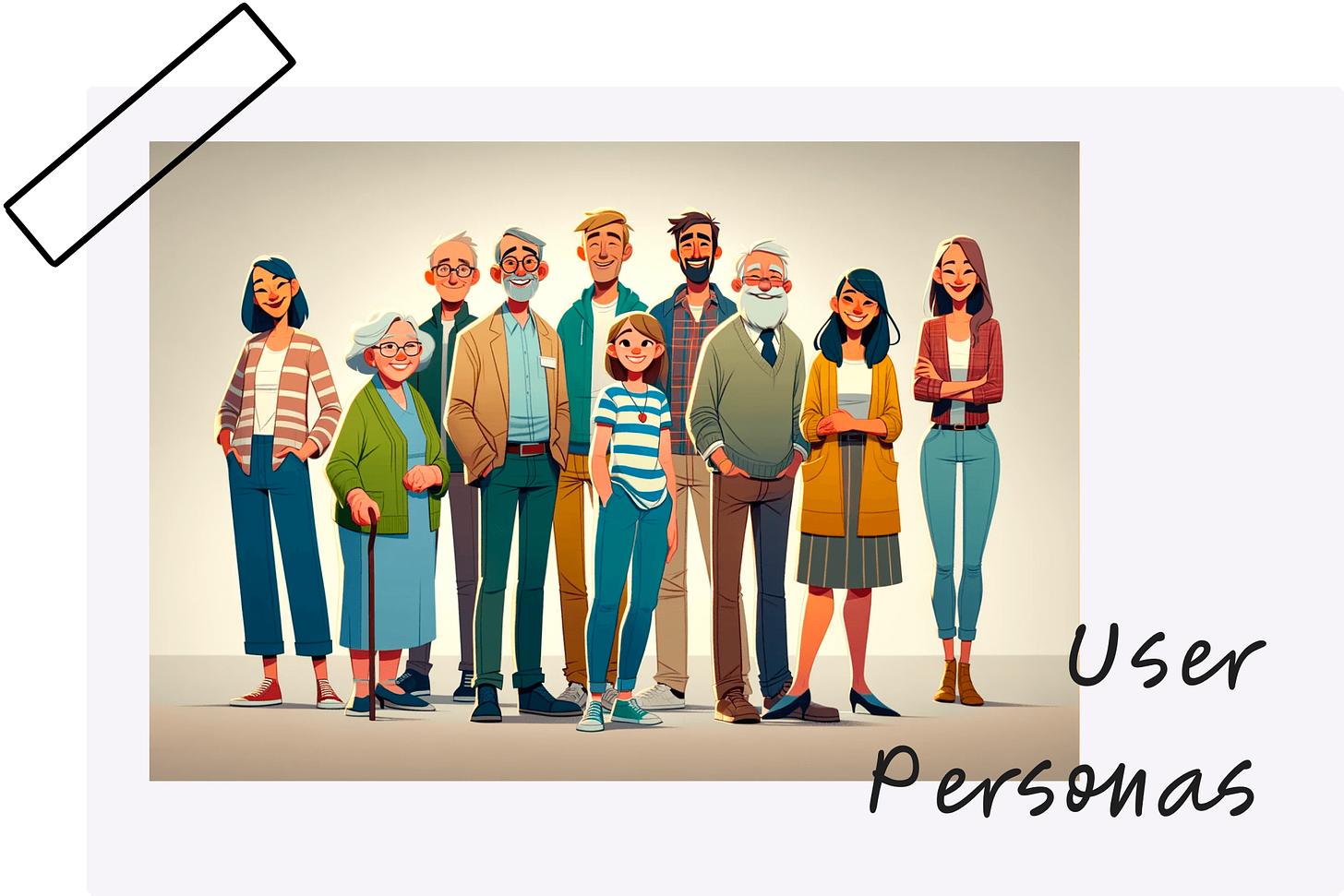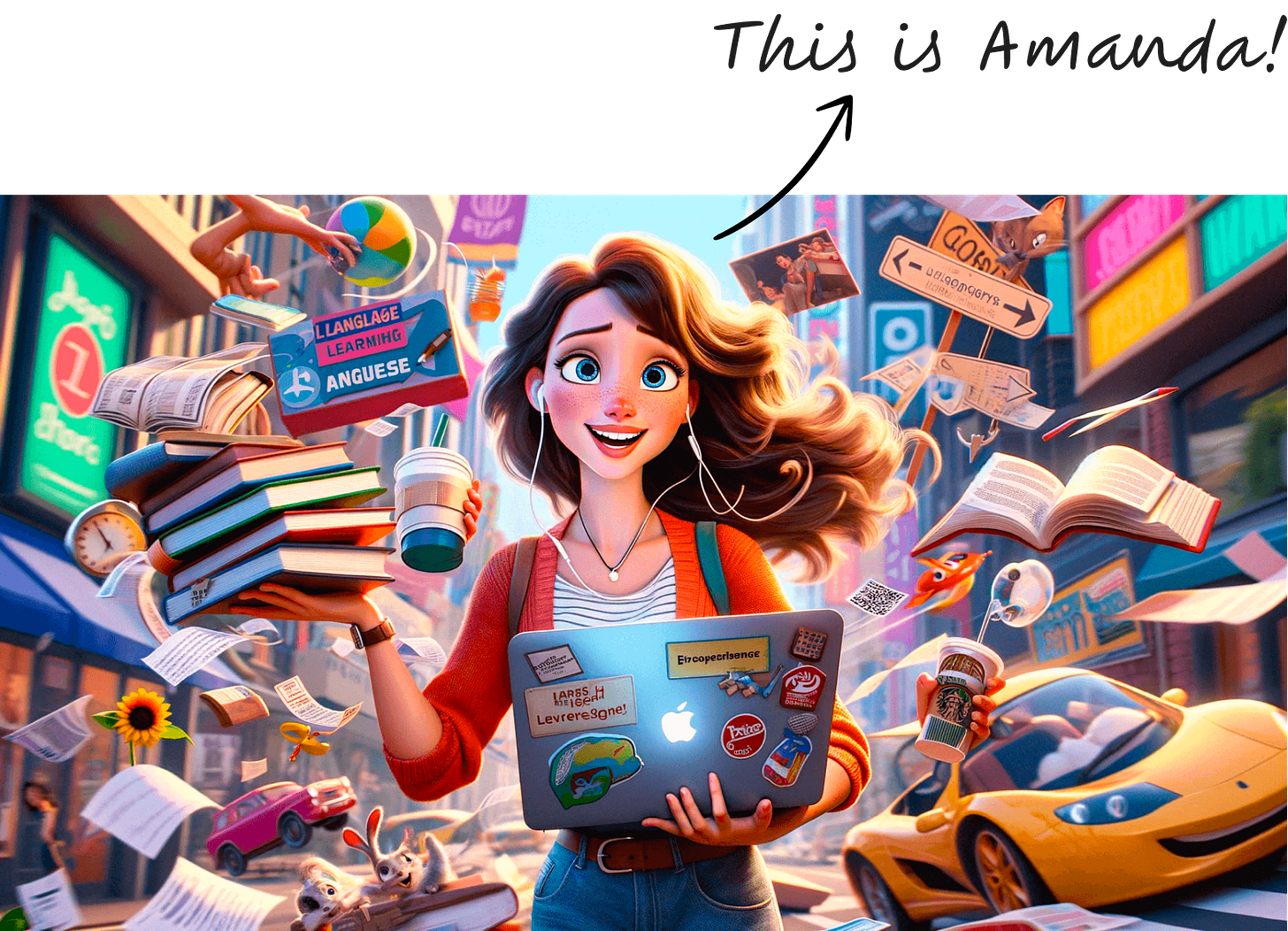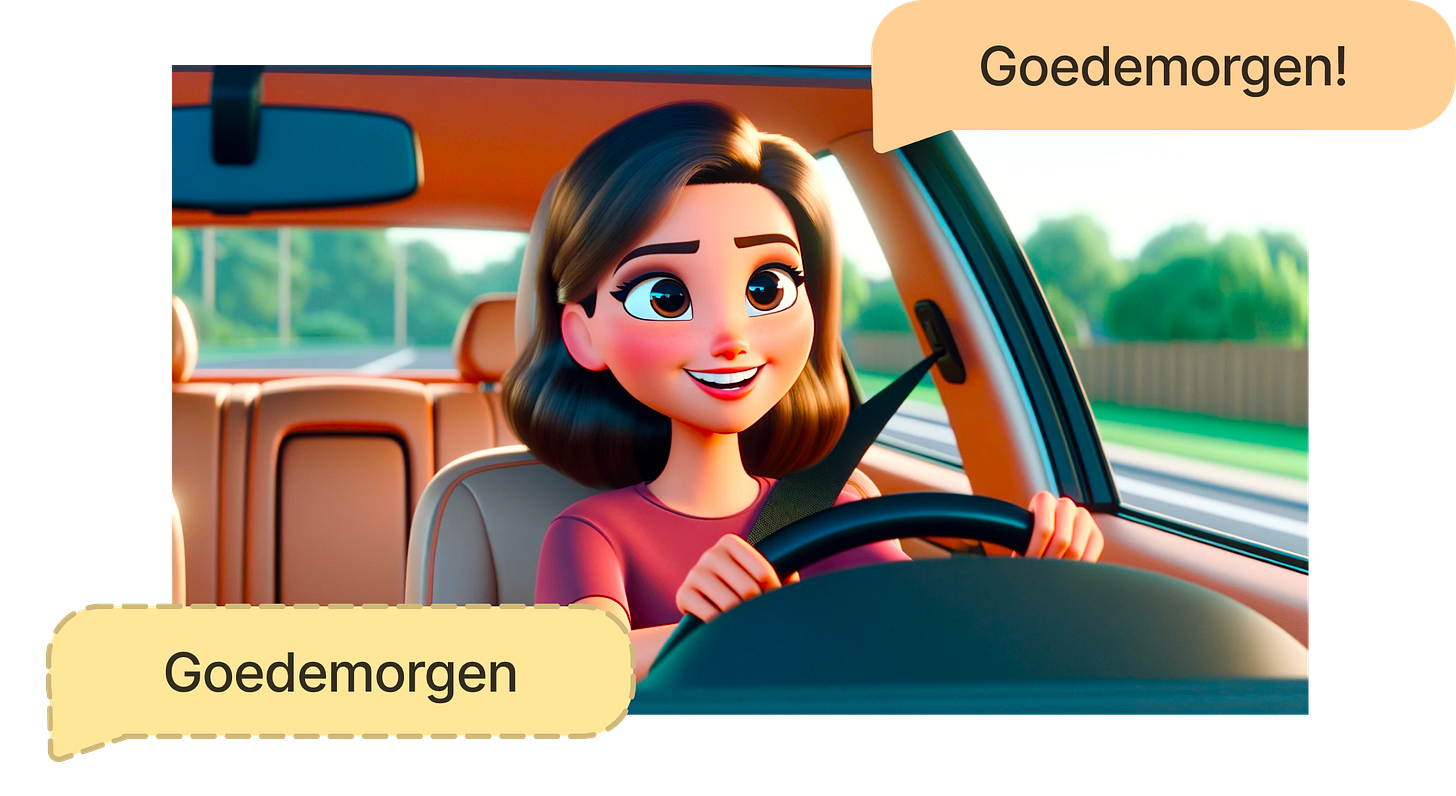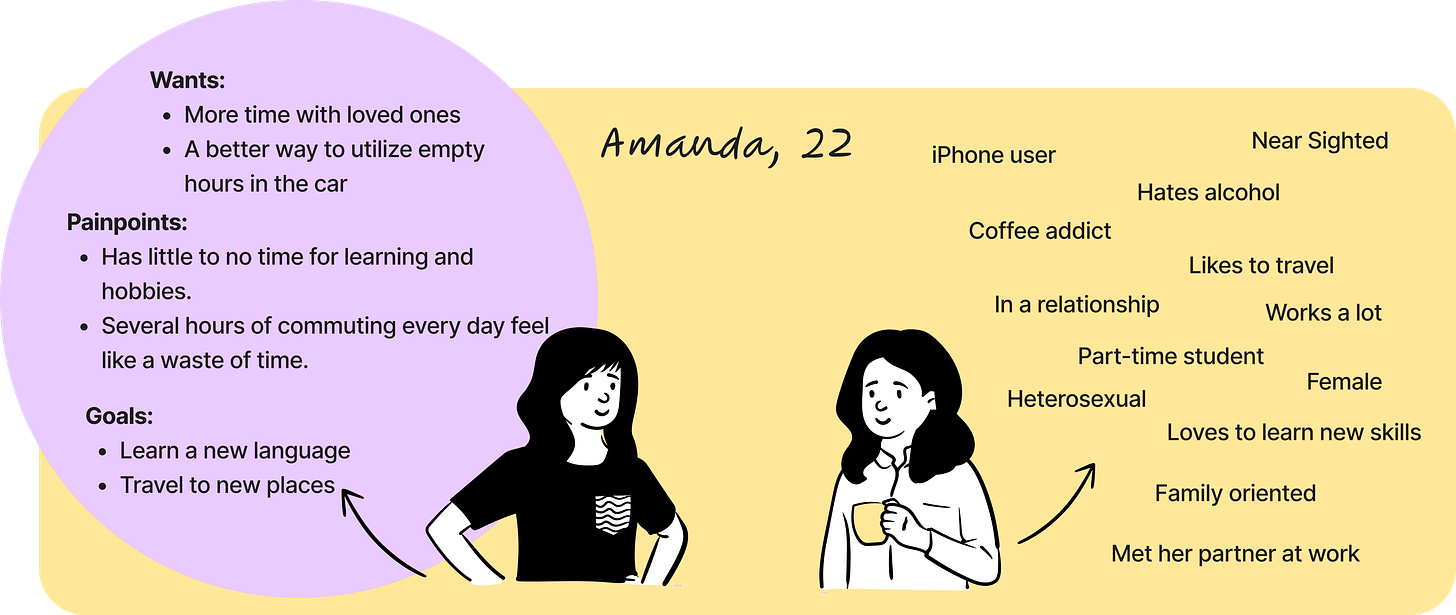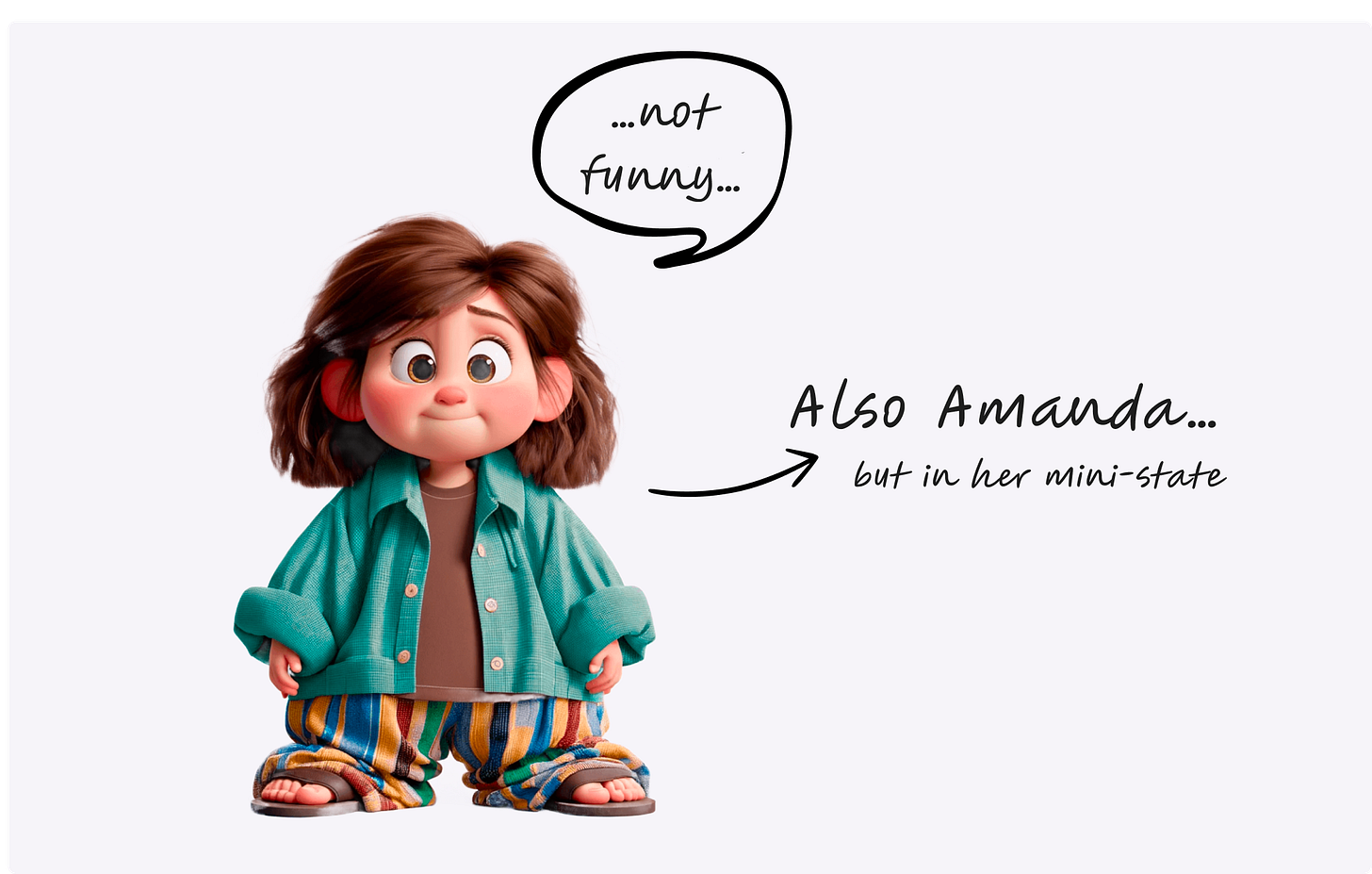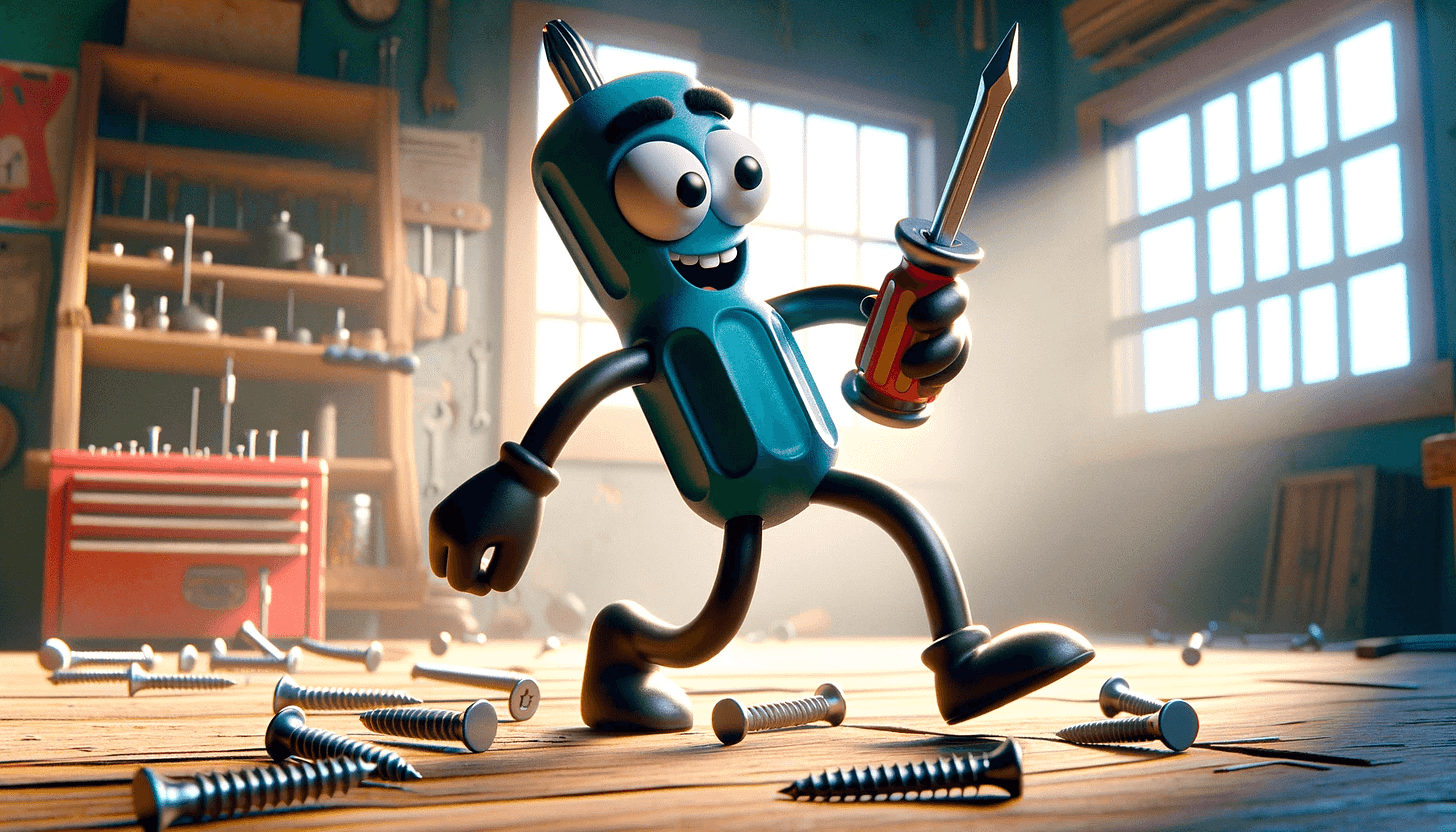👱🏼♀️ Navigating User Personas in UX: Beyond the Basics
👱🏼♀️ Navigating User Personas in UX: Beyond the Basics |
Ever wondered if your user personas are more fiction than fact? Let's bring them to life with a pinch of UX wisdom and a dash of practicality! Happy Sunday, Design Peeps! In this week’s newsletter, we’ll learn about User Personas, particularly: ❓Why do we create User Personas? 📣 How are UX personas different from Marketing personas? 🤝 How do we create User Personas with inclusivity in mind? ➕ Bonus: Can Chat GPT create my personas for me?
I like to think about User Personas as fictitious but realistic people, like characters in a TV show. Their character is marked, shaped and defined by an amalgamation of the most prominent needs, pain points, wishes and goals we have extrapolated in our previous research, which likely includes User Interviews, Surveys, Field Studies, Usability Tests on existing products, Customer Feedback, Focus Groups, Card Sorting exercises, to just name a few. But… ❓Why do we create User Personas?Imagine you have a close friend, and you want to give that friend a gift for their birthday. You know that this friend is a female, let’s say her name is Amanda. She is in her early 20’s, she is very busy because she works two jobs and is a part-time student.
Based on what and how much you know about Amanda, you can come up with a range of different gifts, that are more or less personalized and tailored to her character. You know she is a huge fan of some type of skill, say for instance, she loves to learn new languages. She just started learning Dutch and is really passionate about it. There are a few gift ideas already, but her needs, goals and pain points can cancel these gift ideas out:
I hope you are really close to Amanda, because that takes commitment 😉 As you can see, knowing the character of your friends pays off. Same thing for your personas. Knowing who your users are, what they are passionate about and what they struggle with, allows you to design for them, rather than with them in mind. It’s what they call User Centric Design. In summary, User Personas are essential because:
📣 How are UX personas different from Marketing personas?I started working at a startup in the AI field, and when I was onboarded, the marketer of the team approached me to develop User Personas together. I was skeptical, but I understood what she was asking for: she knew that UX Designers create User Personas, and didn’t think there was any difference. Whilst UX Personas and Marketing Personas should represent the same group of users, there are some key differences:
So, while I was trying to figure out what Amanda needed, the marketer was already concerned about how she would convince her to buy it. A consensus between Marketing and Design in general, but in particular when it comes to Personas, is crucial for a well designed product. As a designer it’s not always important to know all the details of a Marketing Persona (such as age, gender, demographic, etc.); however, alignment on both sides is necessary. Some exceptions:I hear you thinking: Well… actually some of these data points are actually important for UX Personas, such as gender and age. Some problem statements will dictate the gender or age of a persona very early on: Products that are tailored to female health are developed using a female persona. The gender here is implied in the persona, before the product even became a thing. Sometimes you will also encounter that the UX Persona and the Marketing Persona are not actually the same. A clear example are products for children. They are tailored to little mini-Amanda, to fulfill her needs and expectations as a customer, whilst the marketing strategy will strongly appeal to her caregivers.
🤝 How do we create User Personas with inclusivity in mind?The full design process is oftentimes subject to discussion when it comes to inclusivity and accessibility. User Personas are no exception. Whilst the ideal output of accessible and inclusive design is different from product to product, there are certain strategies that are easy to employ and can boost the inclusivity of your User Personas. Let’s say you are facing the design process for your newest project. You have set up a timeline, in which you listed out a series of steps and milestones. Each step should take into account the results of previous steps, which is a funneling experience, refining the product more and more until you actually have a finalized product.
➕ Bonus: Can Chat GPT create my personas for me?In short... I guess so. Let me explain. I prompted the custom GPT I created (if you want to learn more on that, consider subscribing), to generate User Personas based on a series of parameters I gave it. Since this bot in particular is trained to ask clarifying questions, it actually did a pretty good job at narrowing it down based on past research insights, and was able to give me a persona that seemed to be somewhat plausible.
However: Chat GPT in and of itself is a tool. Have you ever seen a screwdriver taking screws out by itself? No, that'd be a mixture of cool and scary. Tools are designed to be used, but we shouldn’t expect them to do the work for us. Simply because of two reasons:
🤹🏼♀️ Have a productive week! -D. |
